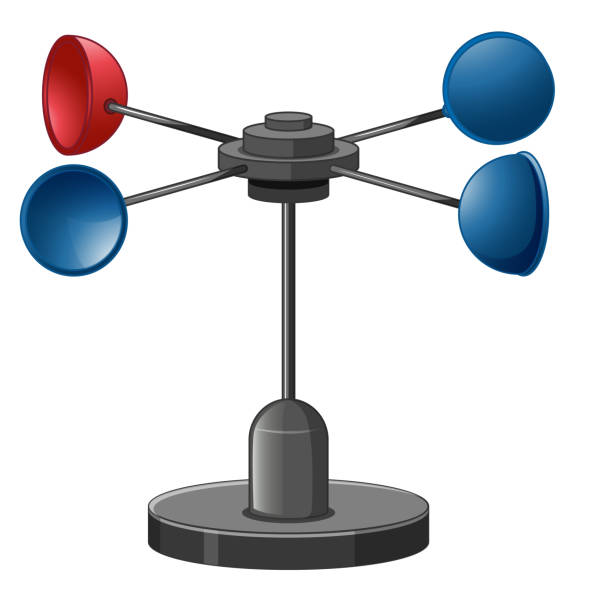Checking Out the Features and Advantages of Anemometers for Weather Condition Fanatics and Professionals
From mug anemometers to sonic anemometers, each type brings its one-of-a-kind set of applications and advantages, shedding light on different facets of climatic conditions. As we dig right into the features and benefits of anemometers, a deeper understanding arises not just of dominating climate phenomena yet likewise of the wider implications for industries like wind energy manufacturing and environmental study.
Relevance of Anemometers in Climate Surveillance
Anemometers play an important role in climate tracking by giving exact measurements of wind speed, assisting in forecasting and understanding weather condition patterns. These instruments, ranging from conventional mug anemometers to modern ultrasonic anemometers, are necessary for meteorologists, researchers, and weather condition lovers alike. By measuring wind speed, anemometers assist in establishing the strength of weather sensations such as storms, cyclones, and tornadoes. Furthermore, they provide beneficial data for air travel, maritime operations, and numerous sectors that are sensitive to wind problems.

Kinds of Anemometers and Their Applications
The most typical kinds of anemometers consist of cup anemometers, vane anemometers, hot-wire anemometers, and ultrasonic anemometers. Mug anemometers consist of three or four cups mounted on straight arms that turn with the wind, determining its rate. Vane anemometers, on the other hand, use an easily turning vane to align with the wind direction, giving both wind rate and direction dimensions.
Each sort of anemometer has its distinct benefits and applications. Mug anemometers are ideal and robust for general climate tracking, while vane anemometers are favored for directional dimensions. Hot-wire anemometers are delicate to low air speeds, making them ideal for interior settings. Ultrasonic anemometers are non-intrusive and supply high precision, typically made use of in research and specialized climate surveillance applications. Comprehending the qualities and applications of each type of anemometer is vital for selecting one of the most appropriate instrument for details weather keeping track of requirements.
Advantages of Utilizing Anemometers in Forecasting
In meteorology, the use of anemometers supplies vital advantages for improving the precision of weather projecting. Anemometers gauge wind speed and instructions, providing essential data for forecasting climate patterns. By integrating wind data into projecting versions, meteorologists can better understand the motion of weather systems, expect modifications in climatic problems, and issue extra exact projections.
Furthermore, anemometers play a crucial function in analyzing potential climate dangers. Monitoring wind speeds assists forecasters anticipate serious weather condition occasions such as hurricanes, tornadoes, and wintertime storms with better accuracy. website here This very early warning system allows authorities to provide prompt notifies and execute required precaution, reducing the threats to life and residential or commercial property.
Additionally, anemometers aid in optimizing renewable resource manufacturing. By analyzing wind patterns, meteorologists can recognize suitable locations for wind ranches and forecast power output, contributing to the reliable generation of wind power.

Anemometers in Wind Power Production
Provided the important duty anemometers play in providing exact wind data for climate projecting and threat evaluation, their importance expands to the world of wind power production. Anemometers are crucial instruments in the field of wind power, where the measurement of wind speed and direction is essential for determining the expediency and performance of wind generator setups. By accurately determining wind speeds at varying elevations, anemometers aid enhance the placement and style of wind generators to take full advantage of energy output.
In wind farms, anemometers are tactically placed to collect real-time wind data that is made use of to evaluate the potential energy production of a website. This data contributes in identifying the economic stability of wind power useful content tasks and in projecting power generation to ensure grid stability. In addition, anemometers aid in keeping track of wind conditions to enhance wind turbine performance, prevent damages from high winds, and guarantee the safety of workers operating in the location of wind generators.
Enhancing Weather Condition Recognizing With Anemometers

Anemometers play an essential duty in boosting our understanding of microclimates. These local weather can differ dramatically from broader local forecasts, making it vital to have accurate data for particular areas. anemometer. By purposefully putting anemometers in different areas, researchers can gather comprehensive information on just how wind behaves in various terrains, urban environments, or bodies of water
In addition, anemometers add to enhancing weather condition projecting designs by offering real-time information on wind habits. This info is particularly useful for forecasting extreme climate occasions, enhancing agricultural practices, and sustaining industries like air travel and maritime navigating. On the whole, anemometers are indispensable tools that enable us to delve much deeper into the intricacies of weather systems, ultimately causing even more better-informed choices and precise predictions.
Verdict
In verdict, anemometers play an important role in weather surveillance and projecting by measuring wind speed and direction. Anemometers also have applications in wind energy manufacturing, more highlighting their significance in both meteorology and sustainable power markets.
From mug anemometers to sonic anemometers, each kind brings its browse around here unique set of benefits and applications, dropping light on different aspects of atmospheric conditions. These tools, varying from conventional mug anemometers to modern ultrasonic anemometers, are crucial for meteorologists, scientists, and climate lovers alike. The most typical types of anemometers consist of mug anemometers, vane anemometers, hot-wire anemometers, and ultrasonic anemometers. Cup anemometers are appropriate and robust for basic weather monitoring, while vane anemometers are favored for directional measurements. Anemometers are necessary instruments in the area of wind energy, where the measurement of wind rate and instructions is essential for establishing the usefulness and effectiveness of wind turbine installations.